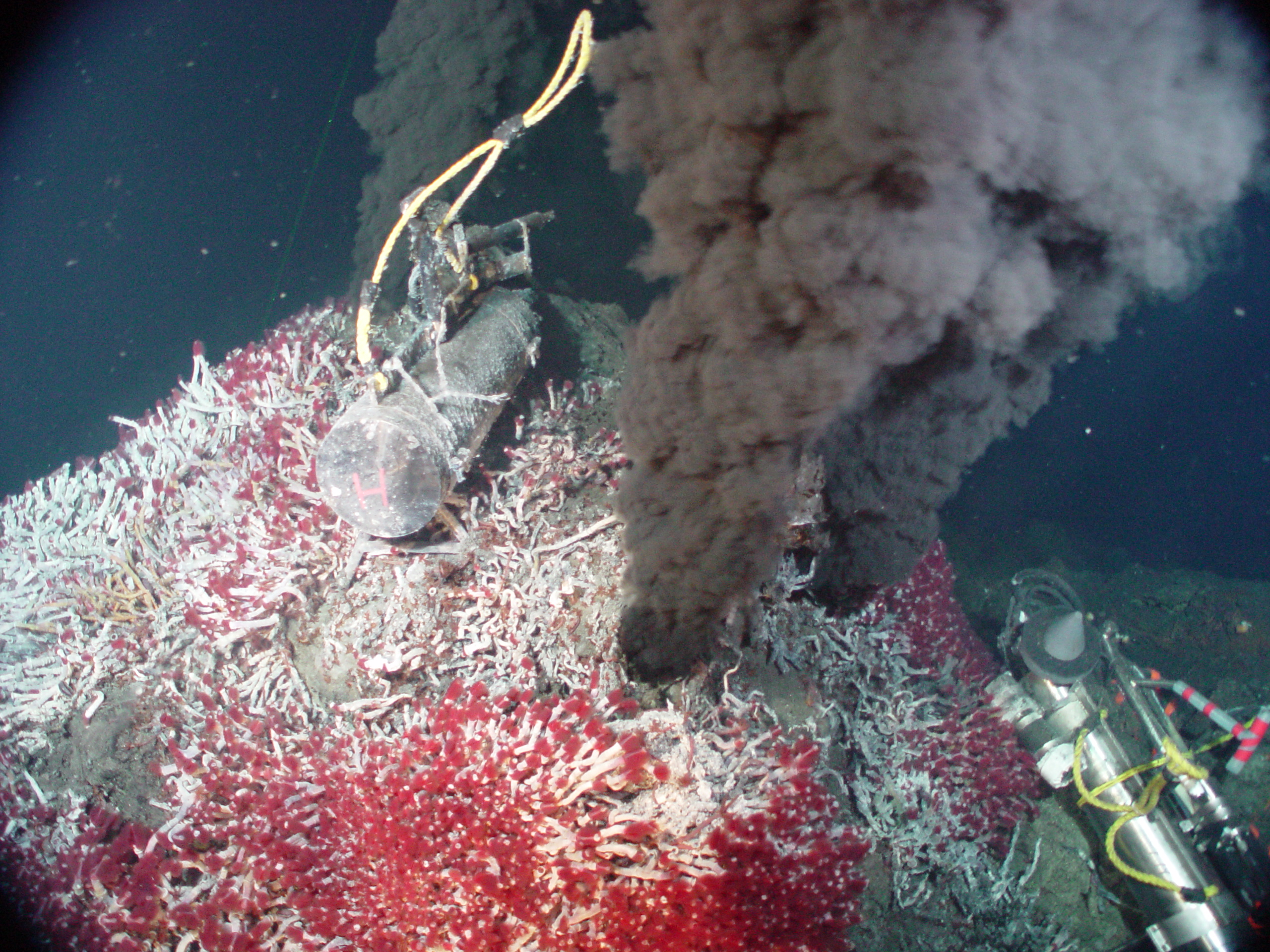

Properties of Cells Today:
Prokaryotes
Eukaryotes-
Prokaryotes precede Eukaryotes by approximately 2 billion years. The evolutionary transition from prokaryotic cell to eukaryotic cells (those with nucleus that contain the DNA) is still not well understood. Many theories exist. One of them, the endosymbiotic theory was for decades dismissed as a relative crackpot theory but now is more widely accepted.
Making Polymers Today:
4 Billion years ago there were no cells to facilitate this. The available energy sources were
All of the above are quite inefficient compared to enzymes
Now we have a multiplying population of bacteria (prokaryotes) that has to eat to survive:
What to eat?
 the food supply is running out
the food supply is running out
EVOLUTIONARY ADVANTAGE: Bacteria that could process plentiful UV light
and INorganic molecules will survive as they have more "food" stocks
available.
 stinky anerobic photosynthesis; this process still continues today
stinky anerobic photosynthesis; this process still continues today  photosynthesis evolved from a need for the bacteria
to be able to feed themselves and multiply
photosynthesis evolved from a need for the bacteria
to be able to feed themselves and multiply
So, chlorophyll evolves to more complex forms so that it can capture and store enough UV energy to breaking the hydrogen-oxygen bond in water.
Now we have a mechanism to deliver Oxygen to the atmosphere via the aerobic photosynthesis of blue-green algae. But, the oxygen does not initially go into the earth's atmosphere. Instead we have to wait 1.5 -2 billion years to get oxygen into our atmosphere!

So now we can crawl out on the Land and not be fried by UV radiation as the protective Ozone layer is now in place.
Life:
Dispersal of Parental Units by a variety of mechanisms:
Passive: (slowly alters gene pool over time)
Active: (catastrophe  "overnight" change in ecosystem)
"overnight" change in ecosystem)
Survival of the fittest works in well-defined, slowly evolving ecosystems (like the ocean); On long time scales, the role of random catastrophe is more important
Mass Extinctions in Geological History:
 definite
definite
 famous
famous
Mass extinctions mean:
Timescale of extinction is crucial in identifying its cause:
 environmental degradation
environmental degradation
 nuked
nuked
Evidence from Fossil Record: 100-150 million year extinction periodicity ???
Since the orbital period of the Sun around the center of the Galaxy is about 250 million years then every 100-150 million years the earth is in a spiral arm which is a region of high supernova density. It is possible the earth could be subject to high radition from these supernova.
Deep Sea Thermal Vents:

Many organisms are found living near hydrothermal vents, including tubeworms (see picture, left), mussels, crabs, squat lobsters, limpets, alvinella worms, scaleworms, zoarcid fish, and octopus. Given the absence of sunlight, no plants are found here. Instead, microbes (bacteria and Archaea) form the base of the food chain. These microscopic organisms are chemosynthetic, using energy from hydrogen sulfide in the vent fluid, and oxygen and carbon dioxide from the seawater, to create simple sugars. Some microbes live symbiotically with organisms such as tubeworms and mussels. Others are free-living and may be found growing on many different surfaces, including rocks, tubeworm tubes and other animals, and even inside chimneys.
Impact events at the Earth's surface likely do not disturb the biochemical environment of the deep sea thermal vents. That environment, therefore has been relatively unchanged for billions of years and hence may serve to renew the bio-chemical chain of life independent of the condition of the Earth's atmosphere and its surface. The discovery of these deep sea thermal vents has opened a new area of biological research known as "Life in Extreme Environments" and has strongly raised the possibility that instead of oceans, perhaps all life needs to start is heat.